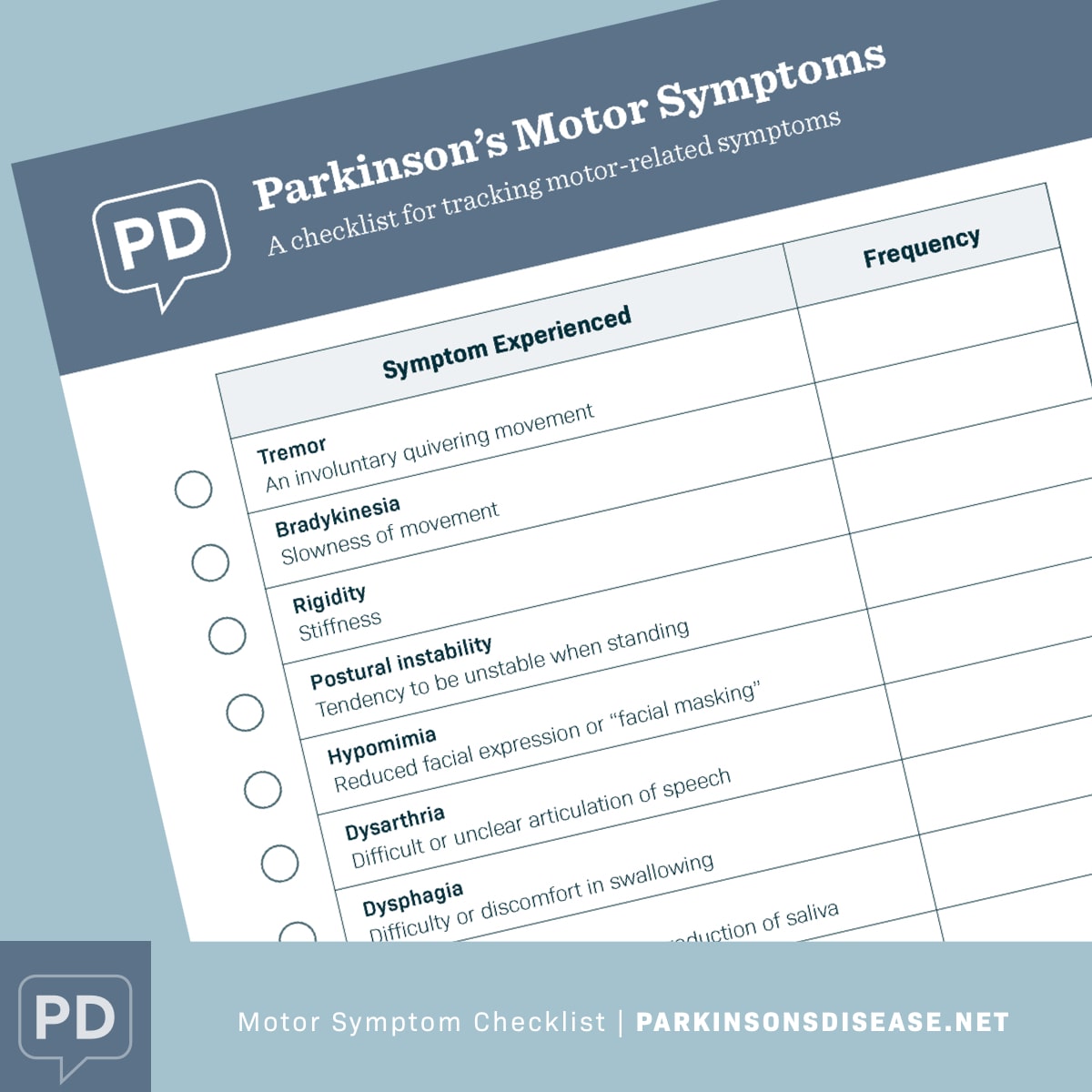Primer on Parkinson’s (Part 2): Motor-Related Symptoms
Part one of this series discusses the basics of Parkinson's disease, including what it is, how it develops, and more. Part two discusses the motor symptoms of Parkinson's.
The definition of 'motor' (mō′tər) is: about motion, the body apparatus involved in the movement, or the brain functions that direct, purposeful activities; of a muscle, nerve, or brain center that produces or subserves motion. Thus, when you see the term 'motor', think of something that produces motion.
Cardinal symptoms of Parkinson's
Parkinson's is a chronic process, and it predominantly occurs in older adults (although early-onset Parkinson's is an important subset). A person-with-Parkinson's usually has some presenting symptoms related to motor or movement difficulties. The four most common symptoms of Parkinson's are an impaired balance, rigidity, slowness of movement, and tremor of resting muscles. These are the so-called cardinal symptoms of Parkinson's, which means when a group of symptoms is combined, it allows for a better diagnosis of that disorder.
Additional motor-related symptoms
As Parkinson's progresses, some additional motor-related symptoms may evolve. To help you better understand your neurologist, the medical term is also included. The hope is that the motor-related symptoms of Parkinson's will be a useful reference, not a harbinger of our future.
| Motor Symptom | Description |
|---|---|
| Dysarthria | Difficult or unclear articulation of speech |
| Dysphagia | Difficulty or discomfort in swallowing |
| Sialorrhea | Hypersalivation or excessive production of saliva |
| Glabellar reflex | Reflex elicited by repetitive tapping on the forehead. Subjects blink in response to the first several taps. If the blinking persists, this is known as Myerson's sign and is abnormal |
| Blepharospasm | Involuntary tight closure of the eyelids |
| Striatal deformity | Abnormal postures of the hand and foot are common in patients with advanced Parkinson's |
| Scoliosis | A condition in which the spine curves to the left or right, creating a C- or S-shaped curve |
| Camptocormia | An abnormal thoracolumbar spinal flexion, which is a forward bending of the lower joints of the spine, occurring in a standing position |
Try to believe this advice from Dr. Atul Gawande, "Better is possible. It does not take a genius. It takes diligence. It takes moral clarity. It takes ingenuity. And above all, it takes a willingness to try."
My motor-related Symptoms
My initial motor-related symptoms revolved around a stiff neck, stiff right hand, and slowness of movement. Additionally, I developed a swallowing defect that resulted in having too much saliva in my mouth, and my voice volume was lessened. And when I got overly-tired, my right leg would drag. The most worrisome motor-related symptom I exhibited was shortness of breath (diaphragm dysfunction) when walking with exertion (going up and down hills). My tremor was not like the typical Parkinson's tremor. At rest, my hand is stable. My hand can slightly shake while holding something. By contrast, the Parkinsonian tremor usually occurs as a resting tremor and frequently this the first symptom of Parkinson's. Resting tremor occurs when a body part is at complete rest against gravity. Interestingly, tremor amplitude decreases with voluntary activity.
With a lot of advice and suggestions from neurologists, internists, family, loved ones, friends, colleagues, students, and golf-buddies, I have a working knowledge and approach to manage most of my motor-related symptoms. OK, so what's the secret? No secret or surprises. However, you must be relentless in pursuing the best combination of Parkinson's-related drug therapies, use widely-accepted physical/occupational therapies, try to reduce your stress levels, get enough sleep (I'm still working on this one), stretch as often as you can, and exercise as much as your day allows (this last one I truly believe is very important).
Living with our motor-related Symptoms
How do we live-forward? How do we manage each moment of the day? We stay positive. We keep trying. Remember you are still you. We are each uniquely different in how we wear our Parkinson's. However, many other features of our disorder unite us. Brené Brown is one of my favorite authors, and she once wrote, "Whether we're overcoming adversity, surviving trauma, or dealing with stress and anxiety, having a sense of purpose, meaning, and perspective in our lives allows us to develop understanding and move forward. Without purpose, meaning, and perspective, it is easy to lose hope, numb our emotions, or become overwhelmed by our circumstances."


Join the conversation